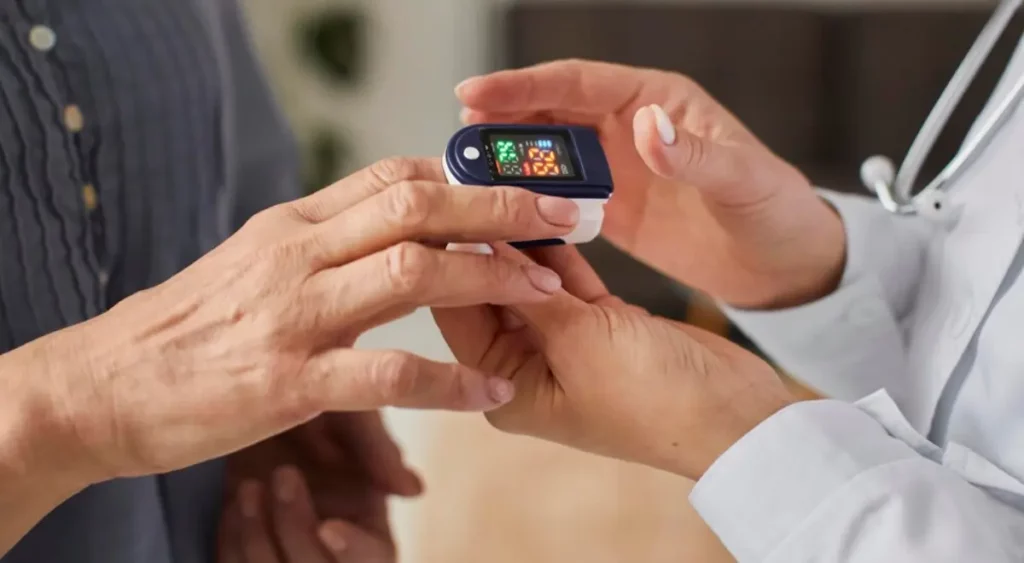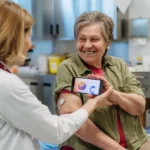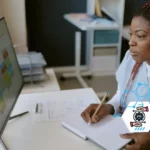Remote Patient Monitoring for Diabetes Management

Remote Patient Monitoring (RPM) is increasingly becoming a necessity that allows healthcare practitioners in keeping a close eye on their chronically-ill patients via a remote patient monitoring platform bridging the patient-provider communication gap and ensuring continuous care, outside of the scheduled in-person visits.
Patient physiologic data, such as vital signs, medical history, and other health related information is transmitted to healthcare practitioners in real-time via a fully integrated remote healthcare system that combines cellular RPM devices and remote monitoring technology to deliver better outcomes.
Table of Contents
ToggleRole Of RPM In Diabetes Management
Diabetes is a common chronic condition that can be tracked with RPM software, via glucometers or continuous glucose monitoring (CGMs) devices. This continuous tracking and monitoring by healthcare professionals allow making timely interventions and help lower the chances of high risk health conditions, like hypoglycemia or hyperglycemia.
Remote patient monitoring for diabetes management provides insights to clinicians about a patient’s daily glucose levels in real-time, using remote glucometers. In this blog, we’ll provide tips to implement a successful RPM program for diabetes management:
RPM Reduces Costs In Diabetes Management
- Fewer Hospitalizations: RPM lessens the need for hospitalization by enabling healthcare providers to manage diabetes more effectively.
- Decreased Emergency Room Visits: RPM enables medical professionals to identify and treat any complications early, thereby reducing the emergency room visits.
- Better Care Coordination: RPM enhances patient-provider communication, resulting in quick interventions and more effective treatment.
- Enhanced Patient Involvement: RPM gives patients the opportunity to participate more actively in their care and treatment process.
Healthcare Providers’ Role in Diabetes Management
Establishing and running an RPM program for diabetes management requires the involvement of healthcare providers in real-time via an integrated remote care platform.
After assessing the patient’s current health status and future goals, healthcare providers choose the right glucose monitoring equipment; identify the patients who would benefit from the program, and provide them remote patient monitoring devices for higher patient engagement and health outcomes.
Healthcare providers must also keep a close eye on their patients’ progress and modify their treatment plans as needed.
Implementing An RPM Program For Diabetes Management
There are various steps involved in implementing an RPM program for diabetes management, including:
- Assessing the individuals with poorly managed diabetes or those who reside in rural or underdeveloped areas and can benefit the most from remote diabetes management.
- Determining the patient’s needs and choosing the right remote monitoring devices, including glucose meters or CGMs.
- Educating patients on the steps to record health data in real-time and ways to use the glucose monitoring devices.
- Establishing a digital health platform and a clinical workflow that allows clinicians to view, evaluate, and modify patient care.
- Considering regular follow-ups with patients to track their progress and provide any necessary assistance and care education.
- Assessing the patient’s glucose levels, HbA1c, and other relevant metrics to evaluate the program efficiency and the health outcomes.
Frequently Asked Questions (FAQs)
Remote patient monitoring for diabetes uses digital devices (such as glucometers or continuous glucose monitors) and a connected platform to track glucose levels and other vitals in real time. It lets healthcare providers act quickly, change treatment, and improve care without having to see patients in person.
RPM helps by providing continuous data, enabling early detection of hypoglycemia or hyperglycemia, fostering patient engagement in their care, reducing emergency room visits and hospitalizations, and improving overall outcomes through timely intervention.
Implementing RPM in diabetes care often leads to fewer hospitalizations, fewer ER visits, better coordination of care, and enhanced patient self-management—all of which help reduce costs over time.
Patients with poorly managed diabetes, those living in rural or underserved areas, those with frequent glucose instability, or individuals needing more intensive monitoring can benefit most. Providers should assess patients’ needs and suitability.
Common devices include remote-enabled glucometers, continuous glucose monitors (CGMs), cellular RPM devices, and integrated digital health platforms, which transmit data to clinicians for review.
Implementation steps include assessing eligible patients, selecting appropriate devices, educating patients on usage, establishing a digital health platform and clinician workflow for monitoring, and conducting regular follow-ups and outcome tracking.
Providers select monitoring equipment, engage patients, review received data continuously, adjust treatment plans as needed, coordinate care, and ensure education and follow-up are in place.
RPM increases engagement by giving patients real-time access to their health data, enabling active participation in monitoring and treatment, facilitating communication with clinicians, and promoting adherence to care plans.
Yes—RPM enables clinicians to monitor trends and intervene when glucose levels deviate, reducing the likelihood of severe hypoglycemia or hyperglycemia and preventing complications.
Key metrics include daily glucose readings, HbA1c levels, frequency of hypoglycemic/hyperglycemic events, patient adherence, and healthcare utilization (hospitalizations/ER visits).
Challenges include device selection and deployment, patient education and adherence, workflow integration, data management and clinician workload, and ensuring patient privacy/security within the digital platform.
A digital health platform aggregates data from devices, enables real-time monitoring by clinicians, supports patient-provider communication (via video/SMS), and allows care-plan access, prescription refills, diagnostic review, and referrals.
Not necessarily. RPM is most beneficial for those who need closer monitoring, struggle with self-management, or live far from care. Patients must also be willing and able to use monitoring devices and comply with the program.
RPM enhances coordination by enabling timely communication between patient, primary providers, specialists, and home-care teams and ensuring treatment plans are updated and followed through across settings.
Practices should look for a solution that follows HIPAA rules, easily connects with devices like glucometers and CGMs, sends data in real time, helps clinician workflows, and includes tools for patient communication.
Conclusion
Diabetes is a serious chronic condition that can cause different problems, some of which are potentially fatal. Providers can assist their patients with improving blood sugar control and lowering their risk of acquiring complications from diabetes by implementing an RPM for diabetes management.
HealthArc is your trusted remote patient monitoring company assisting healthcare providers in managing and assessing their patient’s chronic diabetes condition using our remote patient monitoring platform. With our HIPAA compliant platform, communicate with patients via audio-video calls, SMS, make care plans available to the patient, re-fill prescriptions, review diagnostics and make referrals.
To know more about our RPM software, book a free demo now or feel free to talk to our team at +201 885 5571 for more details.
Most Recent Blogs
Categories
Related Blog
- October 23, 2025 | Read Time: 12 mins
How RPM Devices Improve Hypertension and Diabetes Outcomes in Medicare Populations
Remote patient monitoring (RPM) is transforming chronic care for Medicare beneficiaries. CMS...
Learn More- August 25, 2025 | Read Time: 13 mins
How Can “One Big Beautiful Bill” Boost RPM Programs by $50B?
The “One Big Beautiful Bill,” signed July 4, 2025, directs $50B over...
Learn More- August 22, 2025 | Read Time: 17 mins
HealthArc Platform vs RPM Software Solutions
Is your healthcare organization trying to pick a remote patient monitoring solution?...
Learn More


